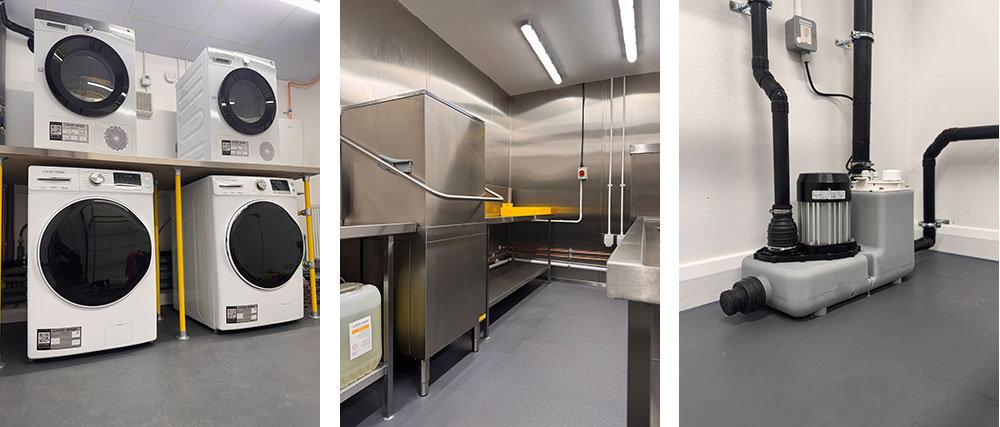Imagine a “Lego city,” swiftly assembled yet unshakeably strong, its steel modules secured to solid foundations and reinforced with seismic bracing, expertly engineered for both speed and strength.
This isn’t a scene from a fantasy film, but a real model of prefabricated and modular construction designed for efficiency, scalability and increased housing supply, which could be a faster and smarter solution to Australia’s housing shortage.
This could also create a new opportunity for Australia and China to collaborate, as China has expertise and precision manufacturing in prefabricated construction. This partnership could deliver mutual benefits, a true win-win scenario.
Housing has become increasingly unaffordable for the average Australian due to soaring property prices and rising rents. With demand outpacing supply, driven by a rapidly growing population, the lack of new homes has made housing one of the country’s most pressing issues.
Advances in modern manufacturing techniques applied to prefabricated and modular construction have the potential to significantly accelerate housing delivery while reducing costs. By harnessing automation, robotics, precision design and fabrication methods, the construction timeline for a high-quality home can be shortened from a year to as little as three months.
“Making a house in a factory instead of onsite can cut construction time in half,” said former Australian minister for Industry and Science Ed Husic.
The Australian Government announced on 22 March that it would lead a national effort to speed up housing construction with a targeted investment of $54 million (US$35 million) in advanced manufacturing of prefabricated and modular home construction.
Australia and China have a significant partnership in prefab housing construction, with China being a major exporter of prefab components and homes to Australia.
Over the past few years, Australia has imported hundreds of millions of Australian dollars’ worth of prefab housing materials and modules from China alone. In 2023, Chinese goods accounted for about 70% of Australia’s prefabricated imports. In 2024, Australia imported prefabricated buildings worth $175 million (US$114 million) from China, according to the United Nations Comtrade database on international trade. As an important player in this real “Lego city” enterprise, China could collaborate with Australia to expand this trade.
Is further strengthening Australia-China collaboration in prefabricated construction both beneficial and achievable? The answer is yes. Will it be easy? The answer is no. Bridging the gap between ambition and implementation requires substantial efforts and co-ordination. When sourcing prefabricated buildings from overseas, mutual recognition of standards is essential.
The Australian Building Codes Board has released a comprehensive “Prefabricated, Modular, and Offsite Construction Handbook”, developed in collaboration with the Building 4.0 CRC, an industry-led research initiative co-funded by the Australian Government. This handbook provides essential guidance on utilising Modern Methods of Construction safely, sustainably, and in compliance with the National Construction Code.
China has issued guidelines promoting the use of prefabricated construction, where building components are primarily manufactured off-site and then assembled on location.
Both countries could strengthen efforts toward the mutual recognition of more construction standards. For Chinese construction firms to succeed in the Australian market, they could thoroughly study local regulations, ensure alignment with relevant standards, and develop detailed project plans before submitting bids.
Meanwhile, increased financial support could help accelerate the growth of prefabricated construction.
Earlier this year, the Commonwealth Bank of Australia announced it would become the first bank to join prefabAUS, the peak body for Australia’s off-site construction industry, as the organisation’s first bank member while also introducing policy changes to simplify the home buying journey for prefabricated housing, helping to deliver greater supply.
“Prefabricated construction is fast, efficient and can play a meaningful role in addressing Australia’s housing shortage. To date, however, everything about construction has been created with traditional, on-site work in mind, and we need to rapidly reimagine how we support this industry to unlock scale and deliver more quality and sustainable homes to market sooner,” said Mike Vacy-Lyle, group executive for business bank at the CBA.
Chinese financial institutions could also participate in these efforts by providing support for prefab design, material exports and bilateral collaboration.
Throughout this process, more workshops and seminars at various levels between the two countries will play a supportive role. Government officials and industry professionals can exchange views, identify new opportunities and enhance efficiency.
As market-oriented initiatives, such forums are designed to engage with home buyers and address their concerns. Key topics may include customisation potential, design flexibility, financing and insurance challenges, and resale value. These forums could explore alignment with Australia’s construction traditions and cultural expectations. This involves compliance with bushfire, cyclone, earthquake and thermal performance standards; ensuring long-term durability; reflecting local architectural aesthetics; and supporting the indoor-outdoor lifestyle that is important to Australian living.
The Australia China Business Council Victoria hosted a property roundtable in May 2025, focusing on the potential of modular and prefabricated construction. The same month, the 17th China International Integrated Housing Industry & Building Industrialisation Expo took place in Guangzhou, showcasing the latest innovations in green prefabrication and modular construction, and drawing lots of international participants. These events, among others, have served as valuable platforms.
Meanwhile, the two countries could collaborate on workforce development through training initiatives and exchange programs. Further, technology transfer initiatives could promote the integration of digital tools and automation technologies across the industry, enhancing the capabilities of practitioners in fields like modular design, robotic assembly, and Building Information Modelling.
As prefab construction becomes more widespread, these collaborative efforts would help create jobs. Supporting the development of expertise in design, logistics and on-site assembly, these initiatives can generate new employment opportunities across both urban and regional areas. Over time, trained workers may also establish their prefab-focused businesses.
A recent example of such co-operation was seen on 15 April 2025, when China Construction Science and Technology Group Green Technology Co. in Shenzhen signed a contract to build a student accommodation project on Herring Road, Macquarie Park, Sydney. Its 565 modules will embark on a voyage across the sea to Australia.
The construction firm has created a ME-House modular building system, which breaks down a structure into multiple functional modules during the design stage. These modules are then precisely prefabricated in a factory, covering most aspects: structural components, plumbing and electrical systems, interior finishes and equipment. Once delivered to the construction site, the modules are assembled into a complete building, much like assembling LEGO.
This project once again highlights the growing potential for deeper collaboration between the two countries in this area. This partnership helps transform innovation into real-world impact – delivering high-quality and affordable housing to more people. Such co-operation, expanding and diversifying bilateral trade, enhances trade resilience and drives it toward smarter and greener solutions.
It doesn’t just build homes; it builds opportunity and well-being.
Source: Pearls & Irritations









